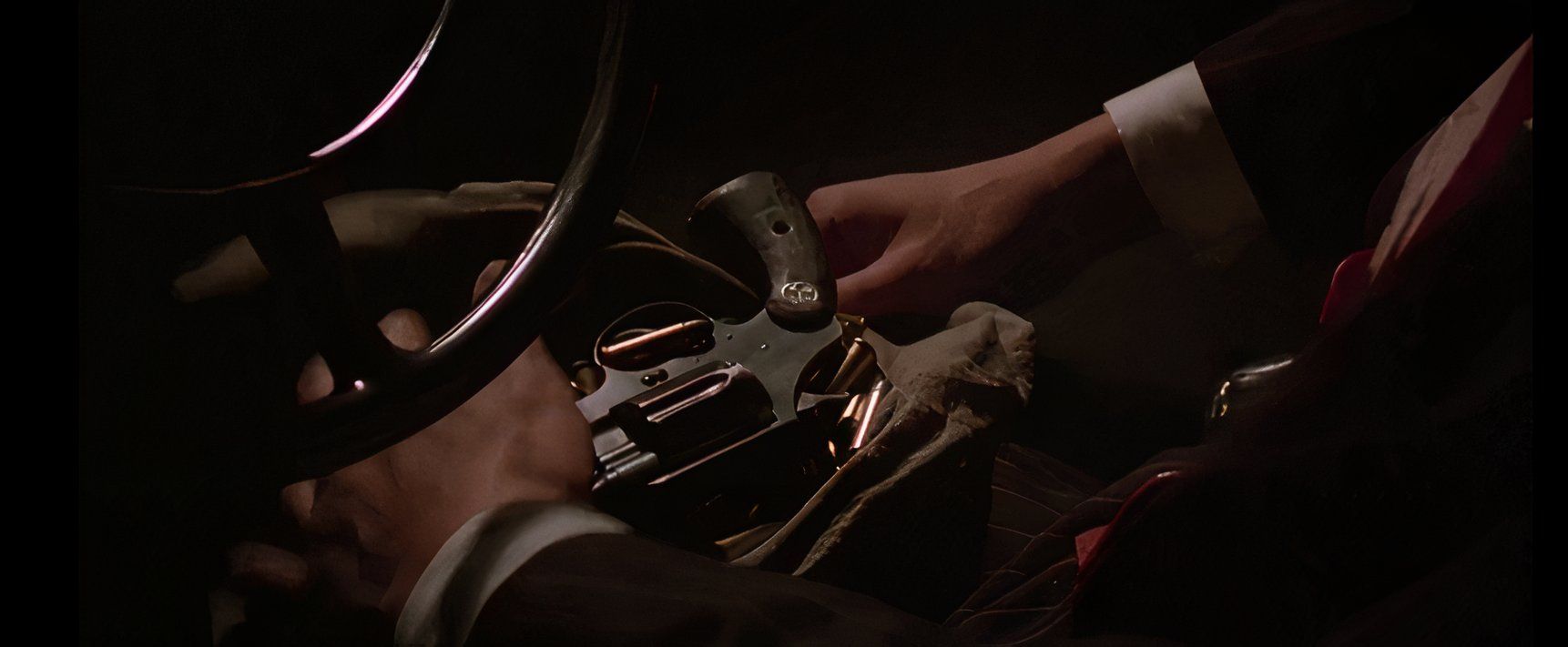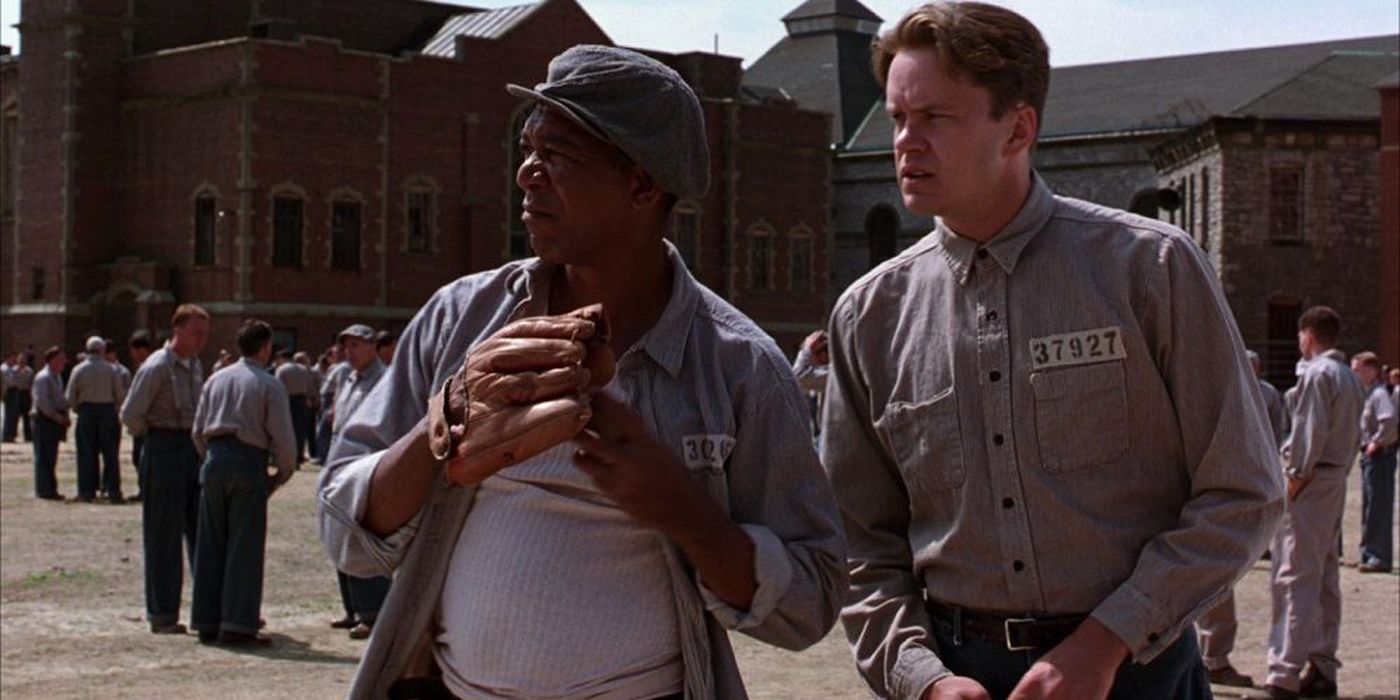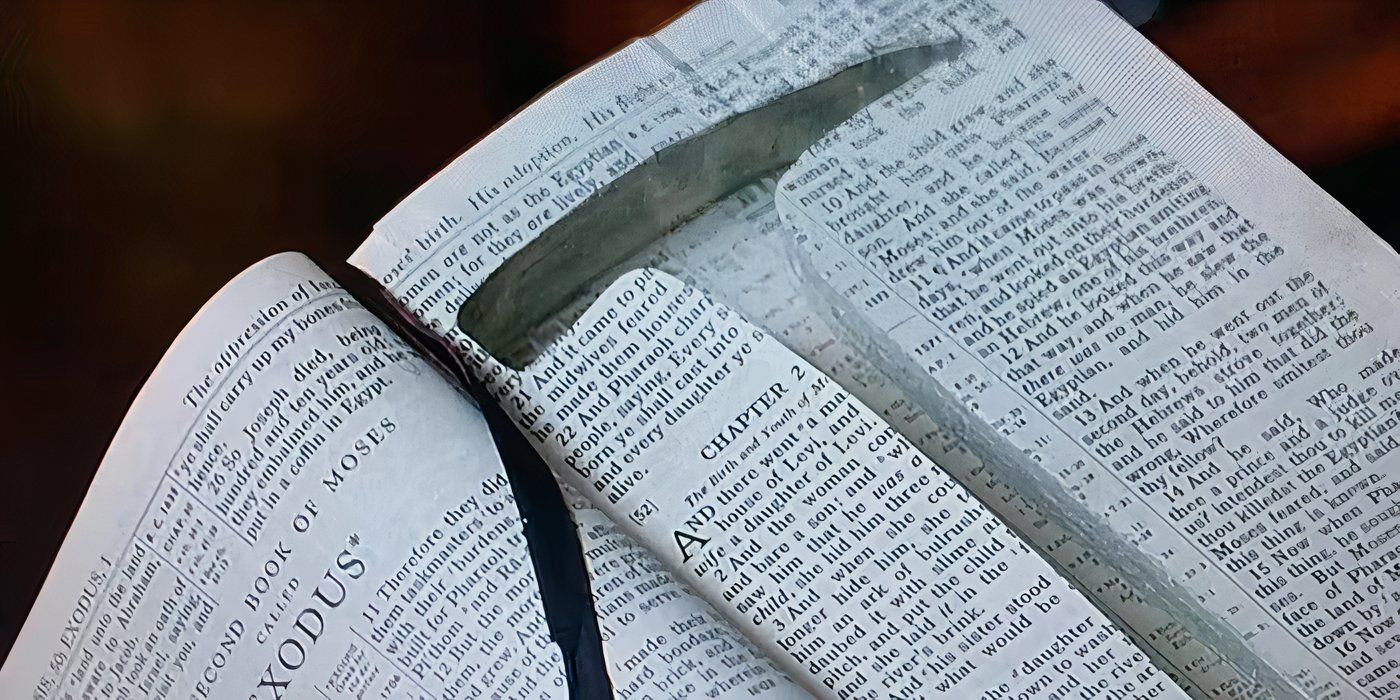The Shawshank Redemption is perhaps the ultimate prison escape movie. Stephen King’s story of singular resilience, determination and ingenuity has become one of the most beloved cinematic works of modern times, with the tale of Andy Dufresne’s time in – and escape from – Shawshank prison providing the ultimate feel-good redemption arc. Given that it’s about a prison break that takes everyone by surprise, including Andy’s best friend, Red, the movie is inevitably chock-full of hidden details pointing towards its inspirational conclusion, which most viewers miss even after rewatching.
Some of these Easter eggs hint directly at the events at the end of The Shawshank Redemption, while others shed light on earlier plot points. There are also hidden references to various works by Stephen King, including other King novels and novellas which have been adapted for the big screen. Once you spot these allusions, you simply can’t unsee them the next time you watch The Shawshank Redemption, and some of them might even change your perspective on its protagonist’s story.
1
The Number Of Bullets In Andy’s Gun
Dufresne Only Loaded 1 Of The Bullets He Had With Him
Andy Dufresne appears to be guilty of killing his wife and her lover from what we see in the opening moments of The Shawshank Redemption, despite the fact that he pleads his innocence on the witness stand. There was a clear motive for him to commit the crime, and both physical and circumstantial evidence to support the case against him, including Andy’s own admission that he drunkenly drove up to his wife’s love nest with a gun.
However, the final piece of evidence used by the prosecution against Andy effectively demonstrates to eagle-eyed viewers of the movie that he’s not actually guilty of the crime. In order to push for a guilty verdict on the count of premeditated murder, the prosecuting attorney submits that Andy brought eight bullets with him to the house where his wife and her lover were staying, meaning he had to reload his revolver, which only had the capacity for six rounds.
The hands we see in the scene where Andy Dufresne loads his gun are actually those of Frank Darabont, The Shawshank Redemption’s director.
Yet, moments before the prosecutor argues this point, we see Andy loading his gun for ourselves. He places one bullet in the empty chamber of the revolver, with five more set aside on the left of the picture, and two more visible on the right-hand side. The next time the movie cuts back to this scene, Andy has finished loading the revolver, but all the other bullets are still sitting there. He takes a swig of whiskey, and gets out of his car with the gun.
If his wife and her lover were sH๏τ eight times, then it couldn’t have been by Andy Dufresne. From what we see, his gun was only loaded with one bullet at the time he planned to confront them.
2
Royal River
The Same River In Fellow Stephen King Adaptation Stand By Me
In the same courtroom scene at the start of The Shawshank Redemption, Andy mentions throwing his gun into the Royal River. This river is a significant body of water running through Maine, the US state that Stephen King, the originator of the movie’s story, hails from.
The Royal River is also referenced in the Stephen King book ‘Salem’s Lot and the novella “The Body” – which is better known by the name of its 1986 film adaptation, Stand by Me. In fact, the river features prominently in this movie, as the basis for a scene in which its four protagonists are attacked by leeches.
3
“Irish” Red
Red Really Is Of Irish Descent In Stephen King’s Original Novella
When Morgan Freeman’s Red first tells Andy his name in The Shawshank Redemption, Dufresne asks him why he’s called that. “Maybe it’s because I’m Irish,” Red jokes in response. There’s more to this joke than it appears, though, as the original Red in Stephen King’s novella, “Rita Hayworth and the Shawshank Redemption,” actually is of Irish descent. It’s likely that the book character has a shock of ginger hair to go with his name.
Since the movie’s director, Frank Darabont, was set on Morgan Freeman playing the part of Red in his adaptation, the character’s Irish background had to be dropped. Nevertheless, Stephen King’s original version of Red is still referenced in the film by way of this joke.
4
Gilda & Andy’s Crime
The Husband Of Rita Hayworth’s Character Tries To Kill Her After Discovering Her Infidelity
Partway through The Shawshank Redemption, we see prisoners gathered around a projector screen for movie night. They’re watching the 1946 Rita Hayworth noir film, Gilda, which seems to inspire Andy’s decision to get a poster of the star for his cell wall, as a key part of his escape plan.
Gilda is a particularly apt choice of movie for Andy’s story, as it concerns a woman played by Hayworth whose husband tries to kill her when he finds out she’s having an affair. In this way, the plot of Gilda mirrors the crime of which Andy himself was convicted.
5
Operatic Infidelity
Mozart’s “Canzonetta Sull’aria” Is About An Extramarital Affair
Rita Hayworth’s big-screen appearance in Gilda isn’t the only artistic reference to Andy Dufresne’s supposed crime in The Shawshank Redemption. The movie’s most important scene sees Tim Robbins improvise playing a recording of Mozart’s opera composition “Canzonetta Sull’aria”, from his work The Marriage of Figaro, to the entire population of Shawshank prison. The stunt earns Robbins’ character two weeks in solitary confinement, but brings the ecstatic pleasure of beautiful music to hundreds of prison inmates.
“Rather than compress the 128-page novella into a streamlined film, Darabont properly allows the characters and story time to breathe with its 142-minute runtime.” – Grant Hermanns – ScreenRant’s review of The Shawshank Redemption
An interesting detail about the choice of music in this scene is that “Canzonetta Sull’aria” is a serenade designed to entrap a duplicitous spouse suspected of marital infidelity in The Marriage of Figaro. So, the piece continues The Shawshank Redemption’s running theme of referencing Andy’s conviction via subtle artistic allusions.
6
Randall Stevens
The Fake Idenтιтy Andy Creates Is A Homage To Stephen King’s Villain Randall Flagg
Another nod to the source material for The Shawshank Redemption is the name Andy Dufresne invents for the fake idenтιтy he uses to launder money for prison warden Samuel Norton. Dufresne calls him Randall Stevens, a name the movie’s writer-director Frank Darabont came up with as a reference to Stephen King’s book character Randall Flagg.
Flagg is one of the greatest characters King has ever created, a notorious supernatural villain who appears in nine of the novelist’s works, including his Dark Tower series. The equivalent name Andy Dufresne uses for the fake idenтιтy in King’s original novella “Rita Hayworth and the Shawshank Redemption” is Peter Stevens, but Darabont decided the first name needed changing to honor one of his favorite Stephen King creations.
7
“Pipe Dreams”
Red Accidentally Describes The Route Of Andy’s Escape From Shawshank Prison
Famously, Andy Dufresne escapes Shawshank prison through a sewer pipe at the end of the movie, having spent 19 years in jail during the course of The Shawshank Redemption. If you listen closely to the dialogue in the movie, you’ll hear Red alluding to this exact method of escape in the scene before Andy executes his escape.
Andy talks to Red about making a new life for himself in the town of Zihuatanejo, Mexico, which Red dismisses as “sh**ty pipe dreams”. Given that Andy will soon fulfill his dream of leaving Shawshank by crawling down a pipe full of human excrement, Red’s choice of words is surely too perfect to be an accident.
8
Cell 237
Red’s Cell Number In Shawshank Is The Same As The Infamous Room 237 In Stephen King’s The Shining
Once Andy has made a run for it, Red is called in for questioning about what’s happened. A prison guard calls out his cell number, which just happens to be 237, arguably the most famous number in the Stephen King canon.
This number is surely another deliberate allusion by Frank Darabont, this time to King’s legendary horror novel, The Shining. In this novel and its movie adaptation, The Shining’s protagonist Jack Torrance and his son, Danny, each discover that Room 237 of the Overlook H๏τel is haunted by a woman who died in the room.
9
Exodus & The Rock Hammer
Andy’s Hiding Place For His Tool Is An Allusion To His Escape
As The Shawshank Redemption’s narrator Red points out to us, the small rock hammer Andy Dufresne uses to tunnel his way out of his prison cell is unlikely to present a danger to anyone. Nevertheless, the rock hammer counts as serious contraband as far as Shawshank prison staff are concerned, so Andy has to hide it in the last place they’d look.
This choice of page seems like a clever joke on Andy’s part, since he was using the rock hammer hidden within Exodus to engineer his own escape.
With Warden Norton a pious student of the Holy Bible, Andy’s copy of the good book is the one possession of his that guards would never search. After Andy escapes, Norton later discovers that Dufresne hid his rock hammer in a cutout section of his bible’s pages. The cutout begins on the first page of the Book of Exodus, which tells the story of Moses leading his people’s escape from Egypt. This choice of page seems like a clever joke on Andy’s part, since he was using the rock hammer hidden within Exodus to engineer his own escape.
10
Red Never Smokes
Despite Dealing Primarily In Cigarettes, He Never Takes One Himself
Among The Shawshank Redemption’s best quotes, we hear Red complaining that Andy Dufresne cost him two packs of cigarettes when he arrived in Shawshank prison. Red is referring to the betting game he conducted with fellow inmates about which new prisoner would break down during their first night in the cell.
Whenever Red is dealing with his friends inside Shawshank’s prison walls, cigarettes are never far from the conversation. They’re the most common form of contraband that Red procures for other inmates. Yet, for the entire duration of The Shawshank Redemption, we never actually see Red smoke himself. Apparently, his cigarette-smuggling business was purely for the benefit of his fellow prisoners, aside from the tidy profit it must have made him through the years.








